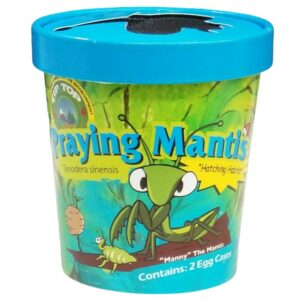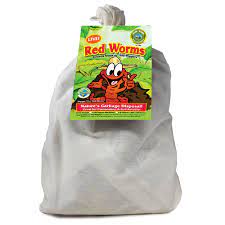Description
About Live Ladybugs:
Ladybugs are a breed of Convergent Beetle named Hippodamia Convergens, that are general predators that feed on Aphids and a variety of slow-moving, soft bodied garden pests. Ladybugs can be identified by their red domed shell with black spots. These beneficial insects are a must-have for organic gardening or farming. A ladybug will eat insects during both the adult and larval stages, so you can receive ladybugs as adults and continue to have live ladybugs eating during other parts of their life cycle. You can now buy live ladybugs online from Green Thumb Nursery! Read more about how ladybugs are beneficial in the garden below.
Lifespan of the Ladybug (Hippodamia Convergens):
The process of hatching from the eggs to becoming adult ladybugs will take roughly 3 – 4 weeks in summer, and 6 weeks in spring. When released, our live adult ladybugs should mate and lay eggs within 8-10 days of being released .The eggs will hatch into larvae within 5 days. The newly hatched larvae will feed on Aphids for up to three weeks, and then they will enter the pupae stage. The adult ladybug emerges about a week later. However, they usually don’t have their black spots for their first 24 hrs. of their adult hood. So, if your catch one with out spots, you may have found a brand new adult. There may be as many as six generations of ladybugs hatching in a year. Temperature and food availability will determine the timing of each stage and reproduction. One female can lay up to 1,500 eggs over their 100 – day lifetime.
Release Instructions for Ladybugs:
Once you have made it home with your Ladybugs, put them in a household refrigerator but DO NOT FREEZE THEM. Ideally the live Ladybugs should be released in the evening or very early morning when it is cool or overcast so they move more slowly. Do not release during the heat of the day, as heat causes Ladybugs to become overly active and they are more likely to fly away and find shelter away from the original release site. Prior to releasing, water your plants and leaves. This will hydrate and relax your ladybugs after their journey. Ladybugs should be released a few at a time on all plants, twice a week during the season when your plants are lush and attractive to pests.
When you buy live Ladybugs from greenthumb.com they are shipped as adults in containers, pouches, mesh bags and cloth bags. Storing the beetles can be done at a temperature of 40°F to 60°F for 1 – 3 weeks. Ladybugs can begin reproducing immediately with a good source of food and water. Several generations of Ladybugs may occur during one season.
Ladybugs are collected from nature instead of insectaries (it is not cost effective to raise Ladybugs in insectaries due to the amount and cost of food it would take to produce an adult Ladybug). The Ladybugs are refrigerated until sold, for in cold weather Ladybugs will go into a sleep state or dormant state. Some researchers and many users have observed immediate and substantial predation and egg-laying upon release.
Frequently Asked Ladybug Questions:
Q: What do ladybugs eat?
A: Ladybugs are primarily used for natural aphid control but will also eat a variety of other garden pests such as scales or mites when aphids are not present. Aphids are soft bodied insects that suck the juices out of plants. If you have roses in your garden, you have seen aphids. Aphids also come in a variety of colors and not all ladybugs like all the “flavors” of aphids.
Q: Can you ship ladybugs to Hawaii or Alaska?
A: No, we can only ship ladybugs to the continental United States.
Q: What if I cannot release my ladybugs right away?
A: Remove the ladybugs from the shipping box and place the package in a cool area or in the refrigerator. If placed in the fridge the ladybugs will go dormant and will need to warm up before releasing.
Q: If I am going to store my ladybugs in a refrigerator do I need to water them?
A: If they are only going to be in the fridge for a day or two then watering is not necessary. However, if they are going to be stored for a longer period of time you can water the cotton ball found in the packaging.
Q: How long can ladybugs be kept before they are used?
A: If storage is necessary, place ladybugs in a regular household refrigerator for up to three weeks. Do not store in a freezer or warm area as these extremes will cause harm to the ladybugs and they will die.
Q: What time of day should I release ladybugs into my yard or garden?
A: For best results, release ladybugs upon receiving of product, early in the morning or pre dusk when temperatures are cool and the sun is not too bright and hot.
Q: Should I release them all at one time?
A: Try spreading out releases over a few days, depending on infestation and quantity of ladybugs. If you have a small area with only a few plants, sprinkle fifty ladybugs out each day for three days. If you have a large area, releasing all the ladybugs at once in different areas will be sufficient.
Q: Should I wet my plants before I release ladybugs?
A: Lightly water the area before releasing ladybugs in order to refresh them. Ladybugs are attracted to water, meaning happy ladybugs stay and fight pests.
Q: Help! My ladybugs flew away after I released them! What did I do wrong?
A: It is important to provide ladybugs with suitable living conditions if you want their help. In order to reproduce, Ladybugs need a source of water and food(pests). If they do not find these in your area they will leave and may not return. Ladybugs are also attracted to nectar and pollen.
Q: Is it safe to put out ladybugs in my garden after spraying pesticides or organic sprays?
A: No, this is not recommended. The rule of thumb is that if a chemical or organic pesticide is meant to kill the bad bugs, then it will also kill the good bugs. This includes organic sprays. We recommend to our customers to wait at least one (1) month from the last time pesticides were used to release ladybugs. This will provide ample time for the residual pesticides or sprays to dissipate, creating a safe environment for your new Ladybugs.
Q: Are ladybugs poisonous?A: No. Ladybugs are not poisonous to humans. However, they can have toxic effects on some animals. Ladybugs have a foul odor which deters some predators from eating them and their bright colors also help as a deterrent. In nature, red and orange, are warning colors that indicate to another animal or insect that the potential “lunch item” might not be a good choice.
Q: Can I use ladybugs with other beneficial insects? Will they kill each other?
A: No, the best part about biological pest control is that beneficial insects do not target each other. So if you wanted to use Ladybugs together with another beneficial insect used for aphid control then they would work together to eradicate the pest without interfering with each other! It’s like having a second line of defense!
Live insects are guaranteed to be delivered alive. (It may take up to 7-10 business days to arrive)











Reviews
There are no reviews yet.